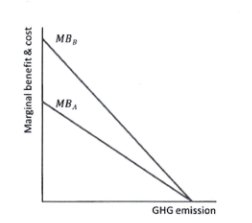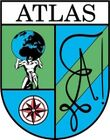Bio-Economics
| Lessen en examens | |
|---|---|
| Docent | Miet Maertens |
| Lesvorm | Hoorcollege |
| Examenvorm | Schriftelijk; meerkeuzevragen met twee open vragen |
| Achtergrond | |
| Studiepunten | 4 |
| Wanneer? | 2e bach, 1e sem |
| Brossen? | Eerder niet |
2023-2024
26 januari
Open vragen
Question 1
Explain in your own wordss the concept of degrowth and how degrowth relates to the Easterlin paradox and the Jevons paradox. (5pts)
Question 2
"China lifts five-year ban on Belgian Pork", Reuters, January 12th 2024.
Belgium and the United States of America (USA) are both exporters of pork. Many Asian countries, including for example China, Japan and South Korea, are large importers of pork in the world. In 2018 countries in the EU and in Asia suffered from a major outbreak of African swine fever (ASF). There was no ASF outbreak in the USA.
Asian countries implented an import ban on Belgian pork after the ASF outbreak in 2018, implying a complete standstill of participation in pork exports for Belgium. After containment of the ASF outbreak, Asian countries one after the other lifted their import ban on Belgian pork in recent years - with China being the last country to have lifted the ban after the visit of Belgian prime minister De Croo to Beijing early January 2024. In addition, to assure sufficient availability of pork, Asian countries lowered their import tariffs on pork during the ASF outbreak (for example from 12% to 8% in China). Today, these import tariffs on pork are back to their normal levels.
2a. Explain using a graphical analysis what the welfare effects are of the ASF outbreak for Belgium by comparing the situation before the ASF outbreak, the situation in 2018 (and subsequent years), and the situation today in Belgium. Be as complete as possible in analyzing the welfare effects. (5pts)
2b. Explain why and how the USA pork market was affected by the situation. Explain using a graphical analysis what the welfare effects are of the ASF outbreak for the USA by comparing the situation before the ASF outbreak, the sitation in 2018 (and subsequent years), and the situation today in the USA. Be as complete as possible in analyzing the welfare effects. (5pts)
Meerkeuzevragen (Alles op 1 punt)
Question 3
Considering a competitive market and profit maximizing firms, which one of the followin statements is correct:
- A firm operating in a competitive market and facing a price below its average total cost and above its average variable cost should shut down, its operation in the short run.
- A firm operating in a competitive market and facing a price below its average total cost and below its average variable cost should increase its output to minimize losses in the short run.
- A firm operating in a competitive market and facing a price above its average total cost but below its marginal cost, and facing decreasing returns to scale, should in crease its otput in the short and decrease its scale of operation in the long run.
- A firm operating in a competitive market, facing a price above its average total cost and above its marginal cost, and facing increasing returns to scale, should increase its output in the short run and increase its scale of operation in the long run.
Question 4

Consider two firms in a sector that creating greenhouse gas (GHG) emissions during the production process. The graph depcts the marginal benefit of GHG emissions for firm A (MBA) and firm B (MBB)
Which one of the following statements concerning the policies to reduce GHG emissions hold in this case?
- Taxing the firms per unit of GHG emission will result in an efficient outcome with both firms reducing their GHG emission levels to the same extent.
- Distributing an equal ampount of tradeable GHG emission permits tot he firms will results in an efficient outcome with firm A likely selling permits to firm B.
- Setting and enforcing an environmental standard (i.e. a maximum emission level) will result in an efficient outcome with both firms reducing their GHG emission levels to the same extent.
- Taxing the firms per unit of GHG emission will result in an efficient outcome with firm B likely reducing GHG emssion levels more than firm A.
2022-2023
27 januari
Open vragen
- There have been recent proposals to abolish value-added tax (consumption tax) on fruits and vegetables
- What could the rationale be to abolish this tax?
- Explain with a graphical analysis what the consequences of the abolishment of the tax could be. Indicate clearly what happens
- Price elasticity for demand for apples and pears is -0,8, while for berries it is -1,4. Explain with a graphical analysis what the consequences of the tax abolishment are on these two goods. Are they different?
- Is a tax on fruit and vegetable consumption a progressive, regressive or proportional tax? What do you think? Explain.
- The lemon market problem or the problem of adverse selection. Explain the problem in your own words and propose some ways to counter the phenomenon.
Meerkeuze (weet ik niet allemaal meer maar dit waren de moeilijkste)
- The GDP of Ampilota is (..), the aggregate consumption function is given by (..) and planned investment is (..). What do you expect will happen to the Ampilotan economy in the next years?
- The demand curve for park space is given by Qu (..) for regular users of park space andQnu for non-regular users. If the marginal cost for the government to create park space is 200.000Q = MC, what is the social optimum level of park space they should provide?
- A monopolistic firm faces a constant MC = 4€ and a demand curve of Q = 4000 - 250P. What is the output they will produce at to maximise profits?
- If the firm from the question above could perfectly price discriminate, what would their profits be? What would social loss be?ùThe EU and the UK are both members of the WTO. What would the consequences be if they hadn't reached a trade deal with Brexit? (i.e. the WTO trade rules about most favoured-nations and tarrifs would apply)
2021-2022
28 januari 2022
Open vragen
Question 1: The EU is a net importer of meat from bovine animals - or beef (Dutch: rundsvlees). The beef imported by the EU mainly comes from the US, Brazil, Chile and other Latin American countries A) Explain, using a graphical analysis, what the welfare effects are of the trade in beef for the EU and for Brazil (in comparison to no trade in beef). Indicate in your analysis, the distribution of these welfare effects. (6 punten) Answer: + 3 punten: EU: completely correct +0.5 punten: EU: demand, supply & pw correct (below pd) +1 punt: EU: CS increase correct +1 punt: EU: PS decrease correct +0.5 punten: EU efficiency gains -0.5 punten: EU: small mistake -1 punten: EU: large or multiple mistake(s) +3 punten: Brazil: completely correct +0.5 punten: Brazil: demand, supply, pw correct (above pd) +1 punt: Brazil: CS decrease correct +1 punt: Brazil: PS increase correct +0.5 punten: Brazil: efficiency gain correct -0.5 punten: Brazil: small mistake -1 punten: Brazil: large or multiple mistake(s) 0 punten: Geen van bovenstaande
B) Would it make sense for the US and Latin-American countries to make agreements among themselves to reduce the herds of bovine animals, and reduce the production and export of beef in expectations of higher prices and better terms of trade? Why or why not? Motivate your answer. (3 punten) Answer: +3 punten: Complete and correct answer: no because other producing countries, and rather price elastic demand for beef and close substitutes available. +1 punt: No, this does not make a lot of sense as they would not be able to increase the world market price of beef much. +1 punt: There are other producing countries, and these countries would expand production. In addition it is rather easy for countries to entry into beef production. +1 punt: Substitutes for beef exist. Therefore, demand for beef is rather price elastic, such that reduced production (in an agreement) would not increase price much. 0 punten: Geen van bovenstaande
C) The EU imposes a rather high tariff (of 20%) on beef imports. Why would the EU apply such a tariff? (1 punt) Answer: +1 punt: Protect domestic producers in the EU. +0.5 punten: Something else useful (tax revenue, reduce environmental externalities, ..) 0 punten: Geen van bovenstaande
D) Explain, using a graphical analysis, what the welfare effects of this tariff on beef are in the EU (in comparison to a situation of free trade without tariffs). Indicate in your analysis the distribution of these welfare effects. (5 punten) Answer: +5 punten: completely correct +1 punt: tariff correctly indicated, increasing the price above the world market price but below the domestic equilibrium price in the EU; such that imports reduce +1 punt: CS correctly indicated in the graph, CS decreases because of the tariff +1 punt: PS correctly indicated in the graph, PS increases because of the tariff +1 punt: tax revenue correctly indicated in the graph, tax revenue for the government positive +1 punt: deadweight losses correctly indicated in the graph, deadweight losses are negative because the decrease in CS is larger than the sum of the increase in PS and tax revenue. There are net losses to society from the tax. Gains from trade are reduced in comparison to no tariff. -0.5 punten: small mistake / something incomplete -1 punten: large mistake or several small mistakes 0 punten: geen van bovenstaande
Question 2: Explain in your own words what public goods are and what the intrinsic problems are with the provisioning of public goods. (5 punten)
Answer:
+1 punt: Public goods are non-rival in consumption: one person's consumption of a public good does not decrease the availability of the good for another person.
+1 punt: Public goods are non-excludable: nobody can be excluded from the consumption of a public good.
+1 punt: Drop-in-the-bucket problem: provisioning of public goods is expensive and a single person's payment for the good does not make a difference (or the provisioning does not depend on a single person's payment)
+1 punt: Free-rider problem: people are not willing to pay for public goods because they cannot be excluded if they do not pay (or they can still enjoy the benefits of the good if they do not pay).
+1 punt: Difficult to know for policy-makers how much of a public good needs to be provided because people have an incentive to not reveal their true preferences for the good because of the drop-in-the-bucket and free-rider problems.
-0.5 punten: Small mistakes / missing things / poor explanation
-1 punten: Large mistakes / missing things / poor explanation
0 punten: Geen van bovenstaande
Meerkeuzevragen
